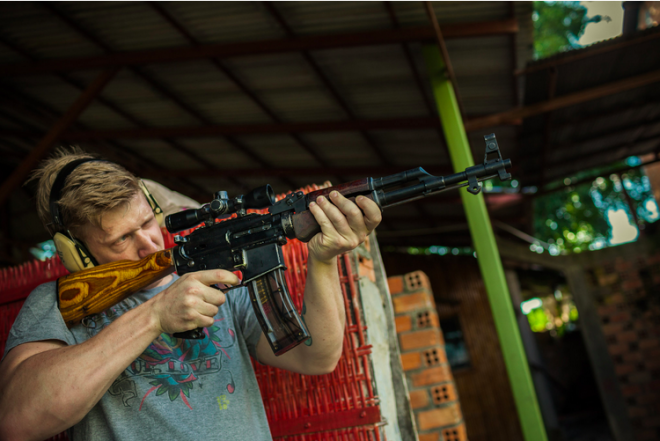I was compiling my database of all my firearms, pictures of them and their serial numbers when at the end of my cataloging, I realized I had 18 guns. That’s not a whole lot in the grand scheme of things to do with collecting but it is alot for me. More importantly I was very vividly drawn back to a time when I couldn’t have any firearms at all because of the political circumstances I was in. And that is what this post is for. This is for those TFB readers out there who can’t own firearms legally, who aren’t able to pop down to their local shop to pick out a new gun, browse for ammunition online, and can’t maintain a family heirloom or even pass one of their own down to their friends or family. In addition I want this post to humble the gun owners who read this, so that they can better appreciate their own collections. Bear in mind this also isn’t just for American gun owners, but international gun owners as well.

The best compiled firearms reference site on the internet is owned by a Russian firearms expert, Maxim Popenker. There isn’t an equivalent site that even comes close to the breadth of knowledge and diversity that each category has.
Although this post might come off as somewhat political because it is on the topic of firearms or non firearms ownership, it isn’t and here is why. Having a passion for small arms is a universal hobby that transcends international law and culture. Either with men or with women, people all over the world are drawn to firearms for a variety of reasons regardless of the fact that they can’t physically own them in their own countries. Most of the time it is purely political, because many countries have sweeping gun control laws that make it literally impossible to be a lawful firearms owner. Other times countries are simply dictatorships that outright outlaw any firearms possession unless you’re a wealthy crony who snuggles up to the military junta at night. But despite these boundaries, people all over the world still find ways to fuel their passion for firearms as we’ll look at in the context of this post. Many of these people probably read this blog, and that’s why this piece is particularly for them.
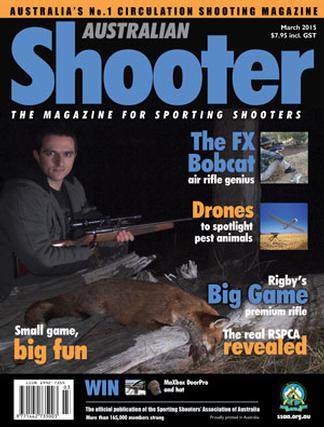
Firearms enthusiasm in Australia, despite some of the countries laws. In fact the foremost expert on the Lee Enfield rifle, Ian Skennerton comes from Australia.
My own personal story of non firearms ownership will serve as the first and most detailed example. For the first 16 years of my childhood I grew up in South East Asia, and the last 2 in a boarding school in the United States. Thailand, Burma, and Malaysia are where I called home. Burma is still controlled by a ruthless and incompetent military dictatorship, Malaysia was similarly controlled by a dictator at the time I was living there, and Thailand was and is a pretty free democratic country despite it’s ebb and flow in the years since. Out of the three, Thailand was the only country where a Thai national could even hope to own a firearm legally, was and is pretty hard to jump through alot of legal hoops and restrictions.
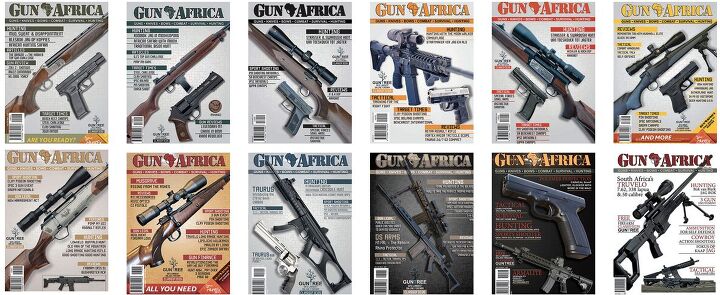
A popular African firearms magazine called Gun Africa. It’s based in South Africa and seems to mostly revolve around that country.
So what do you do when you’re passionate about firearms, but can’t actually have anything to do with them? Anything you can is the answer. This is where Airsoft has made a huge splash down in different parts of Asia, especially in Japan where it has really taken off, and in fact even has most of its origins from. There entire industries have been built up around the sport, including a friendly paintball like park in Tokyo. I’m not too far from the truth in saying that Airsoft as a sport is a type of interest in firearms because it is the closest people can get to a firearm without actually owning one. I’d absolutely wager a bet that most of the adult Japanese Airsoft community (one of the more active Airsoft communities) would be gunowners if the restrictions on firearms weren’t so strict in Japan. I was a huge airsoft enthusiast, I owned over sixty springers and AEGs, had an entire work desk devoted to cleaning and fixing them, and arranged “bb wars” or airsoft skirmishes just about every other weekend. Why? Because I couldn’t be around legitimate firearms so I had to settle for airsoft.
We tend to think that in the United States, we’re gun publication central. We’ve got magazines, blogs, and books galore. And for the most part that is somewhat true, we do probably have the largest variety of firearms related periodical publications. But there are plenty of countries outside of the U.S. that have periodicals that are published on a routine basis. There’s an entire forum for Thai Glock enthusiasts in addition to several Thai print magazines, a Chinese blogger devotes a portion of his trips to the United States simply for shooting at rental ranges. While we’re on the topic of Thais liking guns, heres an article detailing ownership regulations and laws in Thailand. An article over in Wall Street Journal had this to say-
Gun buffs [in China] can turn to Small Arms, a twice-monthly glossy magazine that claims 60,000 subscribers. The Beretta M9 semiautomatic pistol “is classic,” said Zheng Zhoujian, an 18-year-old reader. “I envy people in other countries where guns are legal.
Although this pales in comparison to a figure from a Forbes article which shows Recoil as having over 225,000 copies in circulation, 60,000 subscribers is a huge amount of people considering legal civilian firearm ownership in China is pretty low. (By the way, this particular Chinese magazine lifted one of my articles that I had written for the American Small Arms Review periodical and published it as their own. The only reason I know this is because I randomly picked up one of their copies at a magazine stand in Beijing and my article was inside it, word for word, translated into Chinese. I’m not sure how American and Chinese copyright laws work, but I’m the one who gets to say I’m internationally published!)
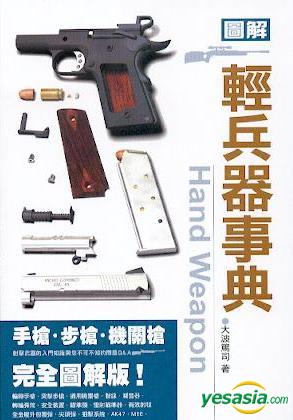
A page from one of the Chinese small arms magazines. When you can’t actually get your hands on them, you look at other ways you can be interested in them, such as in this photo with a round taken apart. It’s interesting to Chinese readers because they don’t even get to handle ammunition, whereas with American shooters something like the inside of a round isn’t as interesting as just examining the firearm being field stripped.
Rental ranges play a huge part in a firearm hobbyist’s life, because they become one of the few places anyone can legally handle firearms in countries ripe with gun control laws. Rental range tourism is humongous among Japanese tourists who visit countries outside of Japan, and is even included on large groups of tourist venues. This is such a selling point that places like Guam and Hawaii have entire shooting ranges devoted to just tourists. Even in Third World, recovering from the Khmer Rouge/ millions of land mines Cambodia, there’s a range that caters to all sorts of tourists and Cambodians. From the Forbes article-
In fact, as you walk down Kalakaua, you’ll see guys holding signs for shooting ranges and wearing T-shirts with targets on them. It’s their job to bring tourists to the smattering of shooting ranges in the area. One flyer offered “REAL GUNS” and “FACTORY AMMO” at the SWAT Gun Club. Another displayed the different firearms — from a 9-mm Beretta to an AK-47 — you could shoot at the Hawaii Gun Club.

A customer at the China North International Shooting Range. There’s always an attendant with you and all the guns are locked via a pad lock to a pivot mount.
When I was in Chiang Mai, Thailand as a child in elementary school my dad would take me out to one of the more popular public shooting ranges just about every weekend. I distinctly remember an entire group of Japanese tourists there one time, shooting a Glock 17. To rent a handgun and 50 rounds was something like fifty bucks or so and the group had a good amount of people. So they had to split it so that each person was getting to shoot 2 rounds so everyone could have equal time on the gun. And they were loving it! All two rounds each person got! As pathetic as this sounds, this is what people do when they finally get around the real thing. In China, outside of Beijing, there’s a range called China North International Shooting Range where they’ve got an entire full room of stuff to shoot, from handguns to machine guns (although the description page lists mortars as well, I’m doubtful, when I went there I didn’t see the mortar option listed). Unfortunately here, some of the laws come into play and what range staff does is they bolt the firearms to a pivot mount so you shoot them, and then walk away. They’re literally locked within a small range of motion for shooting.
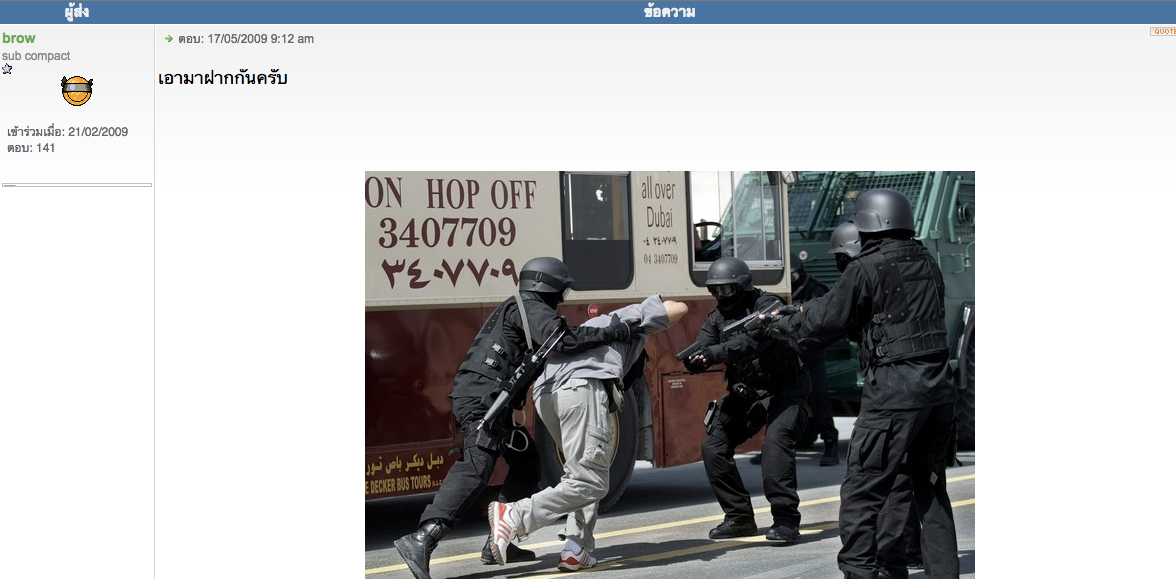
Thai forum posters are posting things about firearms in the same way that American gun owners post on our own forums.
An important avenue for gun owners to understand about non gun owners is that without handling firearms and really getting into the murky details of their operation. It’s difficult for someone to see how a gas piston system works, or why a bolt action rifle is so reliable. Because all you have to reference is through media you watch or read. In addition variational differences are hard to understand, because it’s difficult to visualize something that you’ve never been able to take apart and examine, or relate it to something you have taken apart and examined. As an example, how the M1 Garands en bloc clip is ejected from the rifle is almost criminally simple, but until you’ve actually taken apart a Garand and look at how the clip is placed within the rifle, and how the op rod functions, it is hard to visualize it from studying pictures of the mechanism.
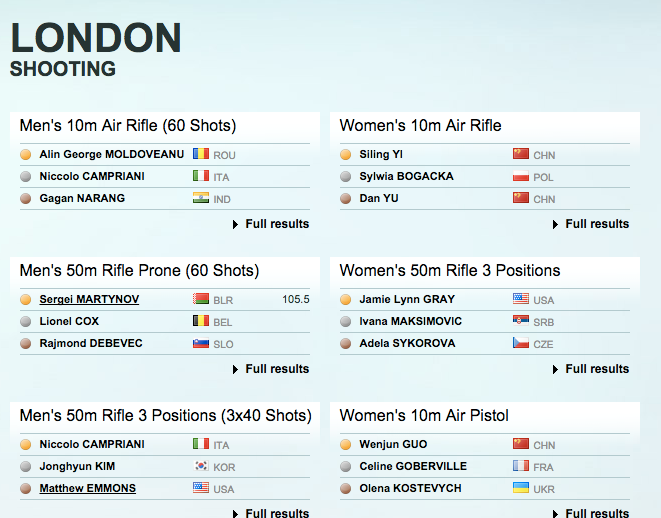
A page from the Olympic shooting results from the London 2012 Olympics. Romanian, Chinese, Polish, Korean, and Ukrainian shooters are all aptly portrayed, even winning medals left and right.
When all your interaction with firearms is through a screen or a book, physical objects become important and significant because you can’t have the real stuff. When I was younger I used to collect brass casings whenever I would go to ranges in the United States while on summer return trips from overseas. I had entire buckets full of brass and expended rounds (nowadays I’m realizing I should have kept more to send in for reloading credit). My dad came home one time and brought me an M16 magazine as a gift from a store he stopped off at while in Virginia. A real M16 magazine! With a working spring and follower! Complete with duct tape at the bottom to ensure a better grip while reloading! This is where my interests in collecting high capacity magazines and drums began. Because if you can’t legally own a firearm, but you can legally own magazines and drums, then by all means full steam ahead.
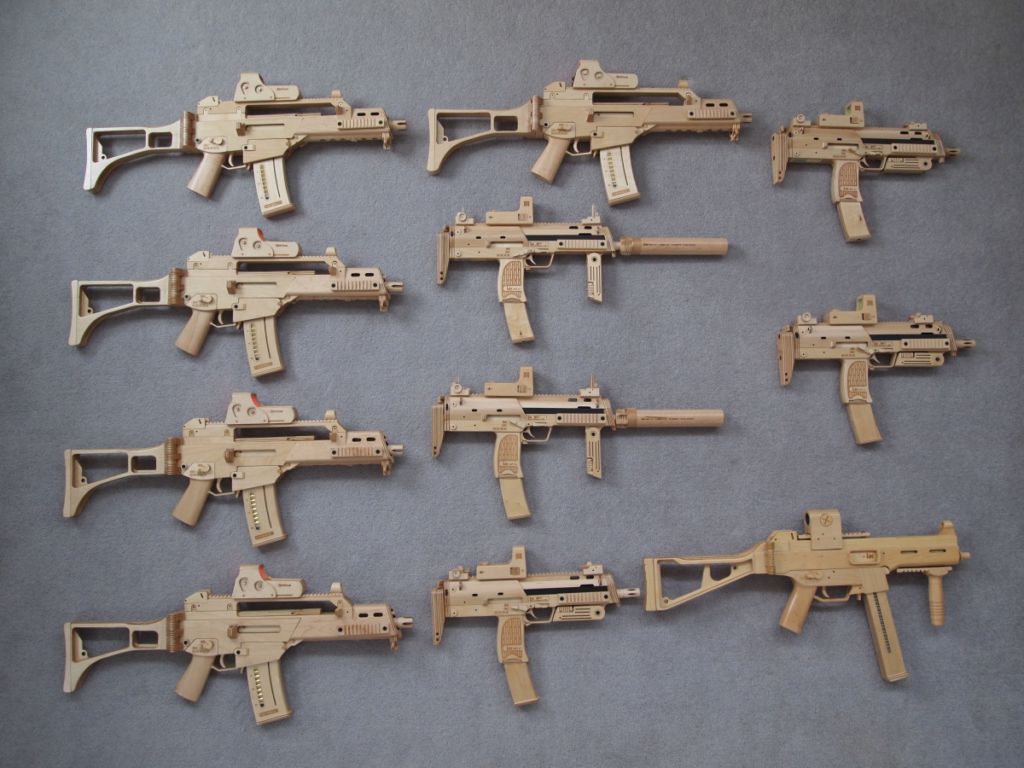
Some of the working wooden replicas made by Jenni Edwards in the UK. If you can’t have the real thing, then you might as well make a replica of it.
Children’s toys are universal the world over, 1:1 scale replicas of firearms that are harmless but allow kids to get their Army Game fix in have existed for the past century. Thus, the fascination with building these replicas has grown out of the childhood phase and moved into the grown adult one, with just as much enthusiasm. In Britain there was even a teacher who created wooden firearm replicas that actually loaded wooden magazines, fed wooden rounds, and ejected them. One of the teachers creations is at the Ministry of Defense Pattern Room in Leeds, UK where I came across it for the first time. I made these as well, not half as intricate, but out of paper and plastic cardboard.

On the left, is a very real M1 Garand purchased from the CMP South Store. On the right is what I made do with when I had no access to an M1, or any other firearm for that matter. Made out of cardboard and tape with a string for a sling, a working safety, and a piece of paper with the serial number written on it (dated to 1943).
Deactivated firearms are also a huge thing, especially in Europe with entire industries and collectors built up around them. The London Proof House even has a significant amount of its business geared to specifically deactivating, or certifying firearms for public consumption. What counts for deactivation is mostly welding the bolt face to a certain angle, slotting the barrel, and machining off most of the rails if a handgun. So collectors can own a legitimate Luger or Lee Enfield, but it just won’t fire at all. However, these deactivated firearms are still worth hundreds of Pounds or Euros depending on the country they are in. Another thing that has really taken off in Britain are air guns that are also worth tons of money. These are pretty intense creations too, made of wood, metal, and sometimes have quality American or German scopes on them. One of the largest historical differences between American and British gun culture is that in Britain, firearms were mostly an element of the upper class, a status symbol to go on the fox hunt. Whereas in America firearms were a frontier necessity, so every family needing to put food on the table had one, in addition to defense against Native Americans or animals. The British class difference still exists today with Holland & Holland shotguns going for over thousands of Pounds a piece in the hands of wealthy aristocrats. Regardless of class difference, there’s still lots of British citizens who are just as avid about firearms as American gun owners are, Ian Harrison is a prime example, coming over to the United States to create Recoil magazine being just one example.
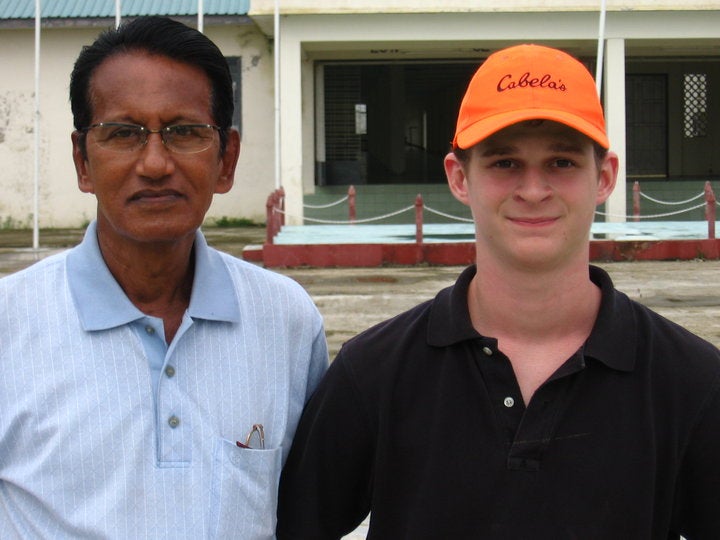
Myself and my former shooting coach, U Kyaw Aye. When I lived in Burma he coached me first on 25 meter .22 short pistol competition, and then 10 meter air pistol. Kyaw Aye was as much into firearms as the most avid American collector, he’d throughly consume every magazine I would get in the mail. We would sit around after practice and talk guns for hours. His formal job was mentoring the Burmese Olympic Shooting team until he retired. Kyaw Aye passed away in January 2014 without ever having the chance to come to the States and go to things like SHOT show or the NRA museum in Fairfax.
One of the more broader messages I really want to get across, and especially to American gun owners is to 1) Realize and appreciate what we have available to us, and 2) Be friendly and reach out. Stop looking at Japanese airsoft fans as some sort of animie cult, and realize that if those guys were in the United States, they’d be right up alongside you at the range or a gun show. I run into guys who are in or around really significant examples of the world we live in and don’t even bat an eye. “Yea, I go to Knob Creek all the time but I just go there for the ammo”. Never mind that Knob Creek is still to this day the largest civilian machine gun shoot in the world, no matter how expensive ammunition is getting. The root of all this is that appreciation for firearms is everywhere, whether it be through being interested in the mechanics, history of design and production, the aesthetic value, uses in video games and movies, or just the thrill of shooting a firearm safely and responsibly. It’s not an “American” thing, but a “people” thing.
 Your Privacy Choices
Your Privacy Choices
